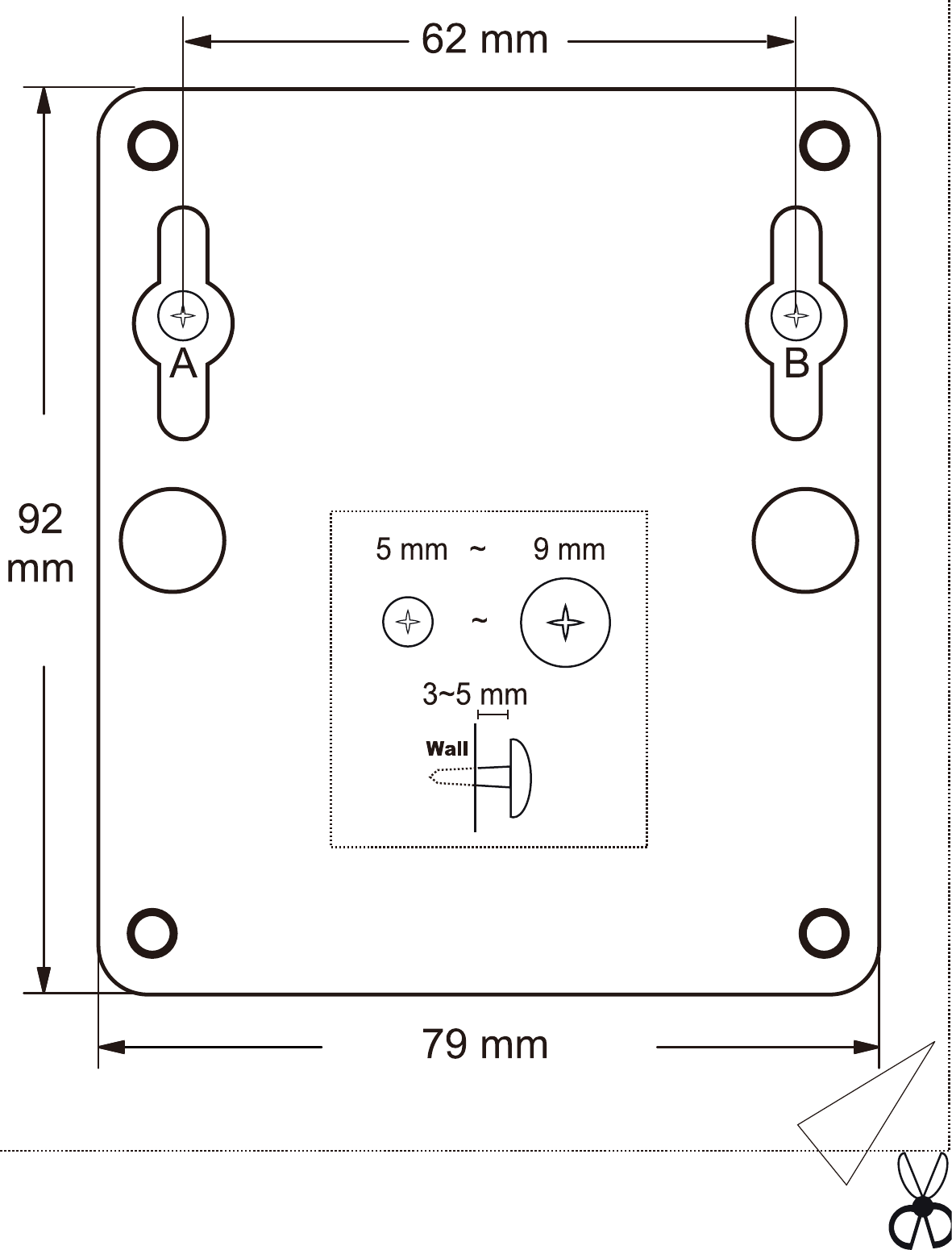Loopcomm Technology LP-9181A 802.11b/g/n Indoor Signal Booster 1000mW User Manual 9181A 20100716
Loopcomm Technology,.Inc. 802.11b/g/n Indoor Signal Booster 1000mW 9181A 20100716
Contents
- 1. users manual
- 2. Users Manual
users manual
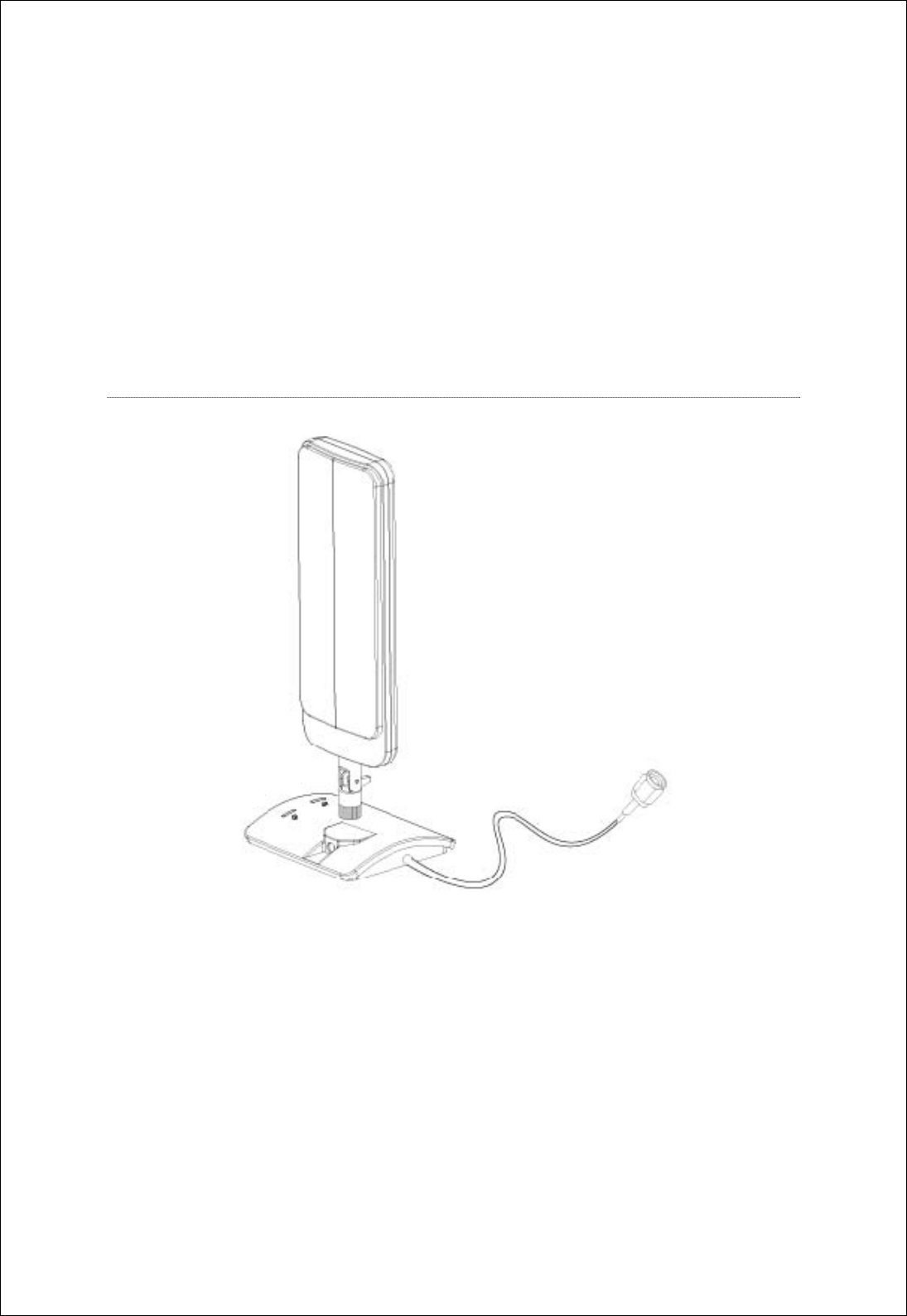
Wireless Signal Booster
&
9 dBi Directional Antenna
Quick Start Guide1.0.0
PLEASE READ THIS NOTICE BEFORE USING THE PRODUCT
Thank you purchase this product, before starting to use , please do read this
application notice and see how this product can be used in the most correct ways
© 2010
1. Warning Statement
Federal Communication Commission Interference Statement Federal Communications
Commission (FCC) Requirements, Part 15
1. Reorient or relocate the receiving antenna.
2. Increase the separation between the equipment and receiver.
3. Connect the equipment into an outlet on a circuit different from that to which the receiver
is connected.
4. Consult the dealer or an experienced radio/TV technician for help.
This device complies with Part 15 of the FCC Rules. Operation is subject to the following two
conditions:
This device may not cause harmful interference. This device must accept any interference
received, including interference that may cause undesired operation.
FCC Caution:
This Transmitter must not be co-located or operating in conjunction with any other antenna or
transmitter. This equipment complies with FCC RF radiation exposure limits set forth for an
uncontrolled environment. This equipment should be installed and operated with a minimum
distance of 20 centimeters between the radiator and your body. Unauthorized antenna,
modification, or attachments could damage the transmitter and may violate FCC regulations.
Regulatory information / Disclaimers:
Any changes or modifications (including the antennas) made to this device that are not
expressly approved by the manufacturer may void the user's authority to operate the
equipment.
1.1 Step1. What you will need to get started
Wireless 802.11b, 802.11g or 802.11n network
Wireless device to attach to this Booster
1.2 Step2. Check your package.
z Booster device base stand × 1
z 9 dBi Directional Antenna × 1
z Power Adapter × 1
z Quick start Guide × 1
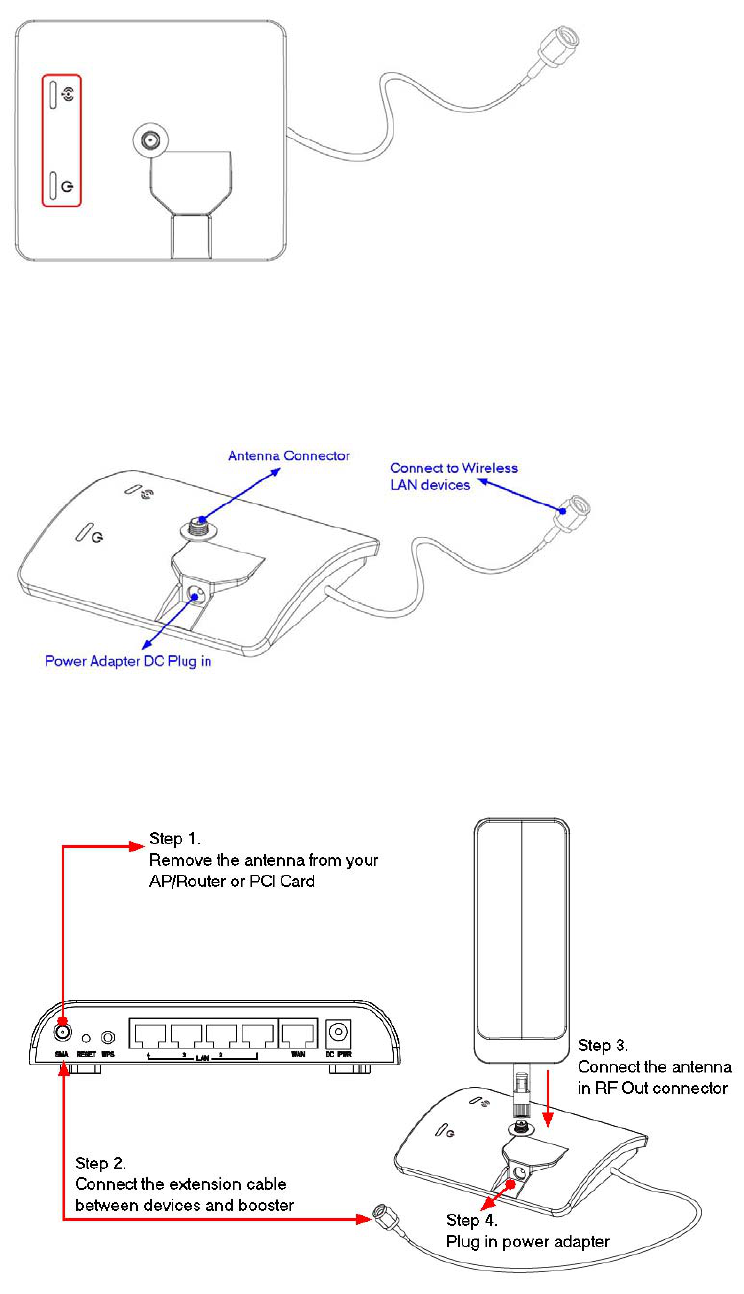
2. Hardware description
Front Side:
Status LED: Display power status and data transmit status.
Input Connector:
3. Hardware installation
4. System Requirements
802.11b, 802.11g or 802.11n Wireless Network Certified 802.11b/g/n Wireless AP / Router /
PCI Network Adapter with a Removable Antenna.
Ethernet
A networking standard using cables (Category 5) to create a network.
Network Adapter
Also known as a NIC (Network Interface Card) used to provide PCs or laptops with an
Ethernet port or wireless access to the network.
Broadband Modem
A device that allows broadband to connect to the Internet. Broadband connections include
speeds faster than 56k (dial up modem speed). The two most common types of Broadband
connections are DSL and Cable. Cable modem relies on the bandwidth of cable television
lines while DSL modems rely on the telephone lines operating at DSL speeds.
Router
A device used to share internet access from one user to multiple users. By taking one IP
address (Addresses used by ISP’s to assign broadband services to your computer) the Router
distributes the services of your broadband access among multiple users and IP’s.
Wireless Device
Any Wi-Fi device(802.11b/g) that use the IEEE802.11 wireless standard. These devices can
range from wireless access points to wireless routers to wireless PCI client cards.
IEEE 802.11
Wireless Network Specifications
z 802.11 -applies to wireless LANs (Networks) and provides 1 or 2 Mbps transmission in the
2.4 GHz band using either frequency hopping spread spectrum (FHSS) or direct sequence
spread spectrum (DSSS).
z 802.11b -(also referred to as 802.11 High Rate or Wi-Fi) -an extension to 802.11 that
applies to wireless LANs and provides 11 Mbps transmission (with a fallback to 5.5, 2 and
1 Mbps) in the 2.4 GHz band. 802.11b uses only DSSS. 802.11b was the 1999 ratification
to the original 802.11 standard, allowing wireless functionality comparable to Ethernet.
z 802.11g -applies to wireless LANs and provides 54 Mbps in the 2.4 GHz band. Backwards
compatible with IEEE 802.11b products.
Hi-Gain Wi-Fi Antenna
High powered antenna to increase the distance of your Wi-Fi device.
SMA Connector
The standard antenna connector is for Wi-Fi devices. This is the most popular connector and
comes standard with all wireless Technologies equipment.
TNC Connector
A type of antenna connector is used by few wireless networking equipment manufacturers.
dBi (decibel)
A unit of measurement used to determine the gain level of wireless antennas.
mW (MilliWatt)
A unit of measurement used to determine the power level of wireless devices.
Proposal AP
Please use the LP-8616 AP, FCC ID : VYTLP-8616
FCC test report for the LP-8616 AP
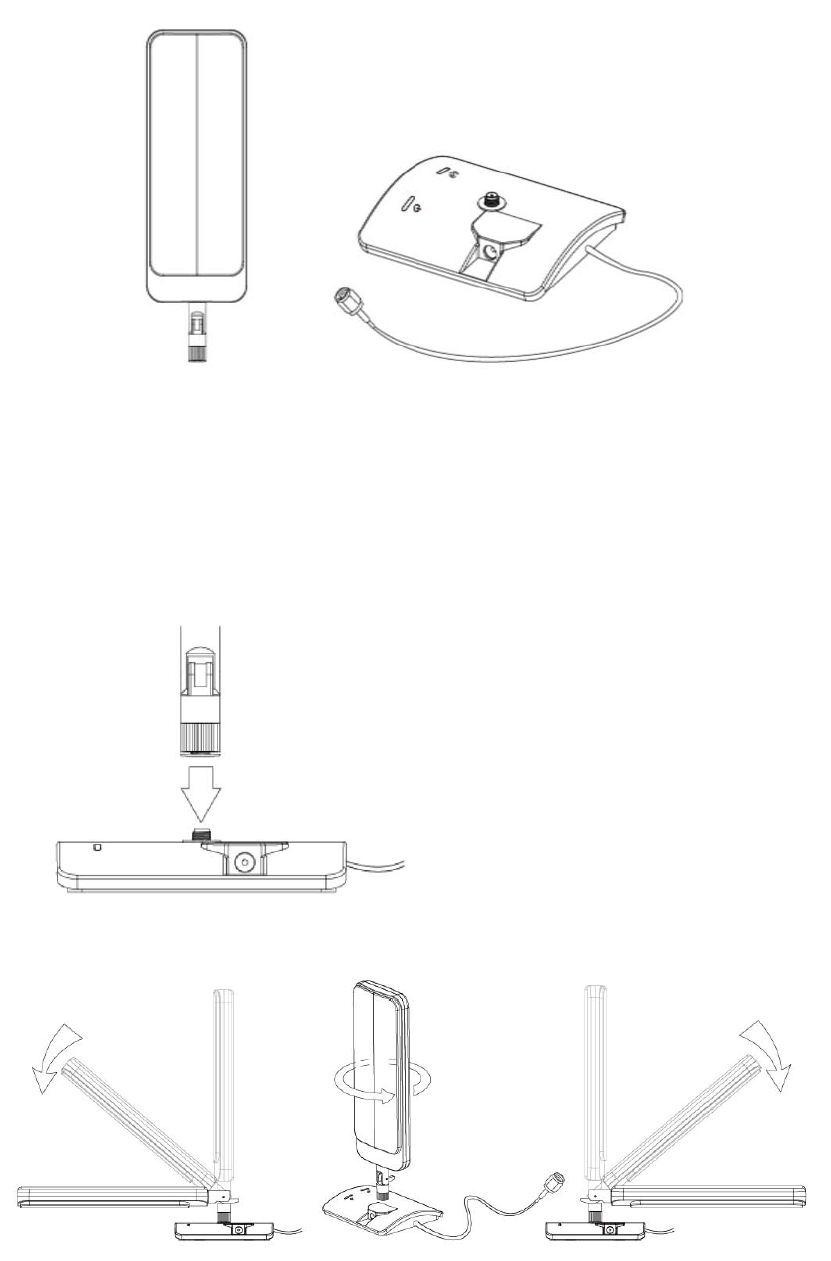
5. Directional Antenna Introduction
The following application diagram will help you to use this device.
The package includes one directional antenna and one booster stand with RF cable.
This package is included the antenna base which you can locate your antenna to a better or
higher position to receive or transmit signals while you connect the antenna onto the AP/AP
Router. In addition, this antenna can also be used with (PCI or USB adaptors which have
SMA connector).
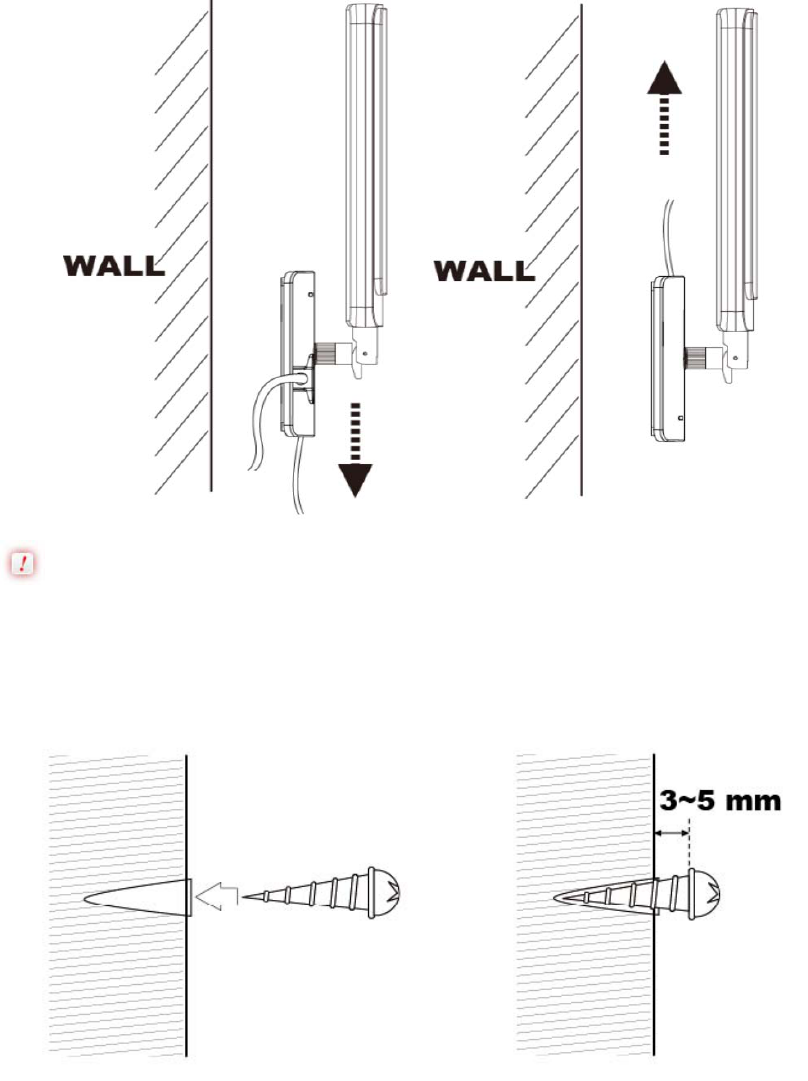
NOTICE
The antenna itself can do 0 to 90 deg mechanical bending and self rotating in 360 deg to get
different bending directions. (See the diagram above)
Wall / partition mount (Antenna base with magnet embedded)
For another specific usage of the antenna deployment, you can install the antenna onto the
wall with attached screws, or attach to office partitions with the magnet design. The cable
deployment can go UPWARDS or DOWNWARDS based on the locations of your wireless
devices.
PLEASE NOTICE THE INSTALLATION STEPS BELOW BEFORE YOU
START TO DRILL HOLES ON THE WALL FOR WALL MOUNT.
About the screws
Lock the screw tightly but remember to keep some free spaces left (about 3 to 5mm) like
diagram below; therefore the antenna can be hanged onto the wall with both the screws.
The direction of antenna stand decides where the cable goes.
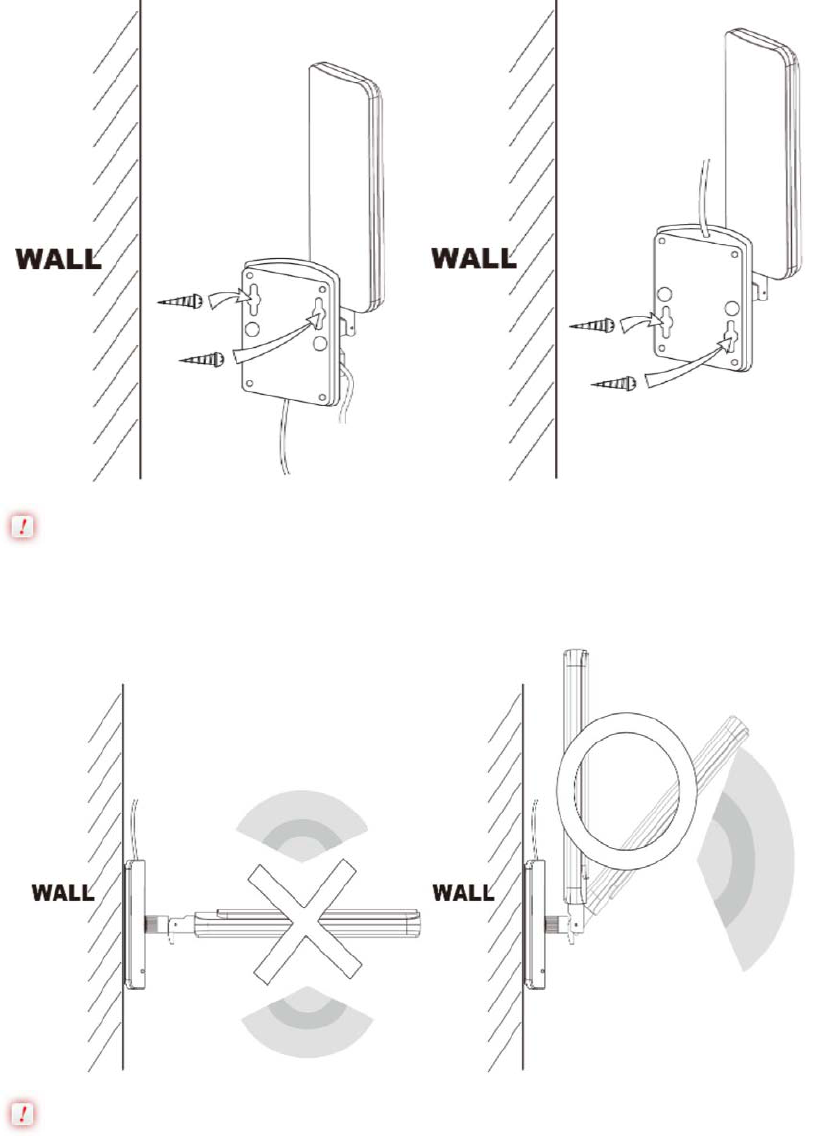
WARNING FOR WALL MOUNT
Please do NOT put the antenna body in such horizontal direction, since the antenna only
generate the horizontal signals when the antenna body is vertical to the ground to cover the
horizontal environment like home/ office.
WARNING FOR WALL MOUNT
When bend this antenna at 90 degree angle, clip the plastic strap is necessary.
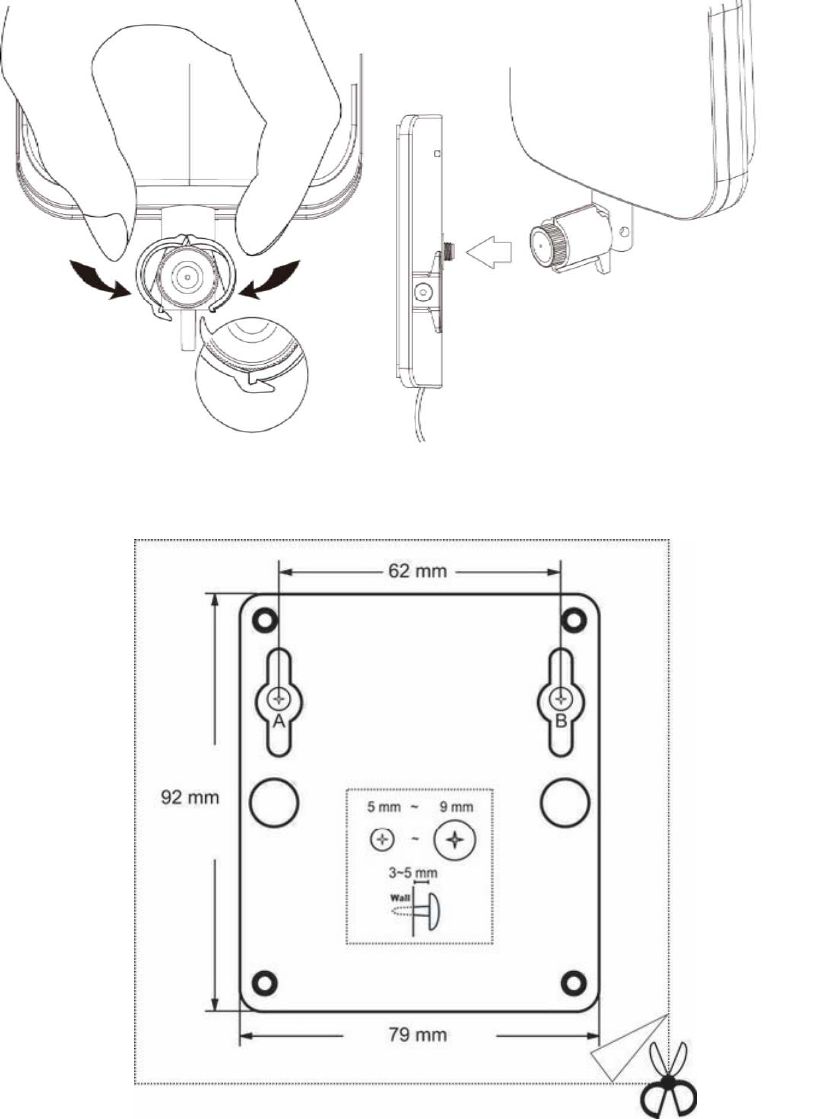
Antenna base stand drawing
About the screws
Lock the screw tightly but remember to keep some free spaces left (about 3 to 5mm) like
diagram below; therefore the antenna can be hanged onto the wall with both the screws.
The second method for mounting the antenna onto a wall:
The length between Point A and Point B is 62 mm. -Fix 2 nail or screws between an interval
of 62 mm by a ruler on the wall for mounting the antenna -Cut the antenna base stand
drawing from the Quick Installation Guide and place it where to mount on the wall and fix 2
nails or screws aiming at the Point A and B on the drawing.
